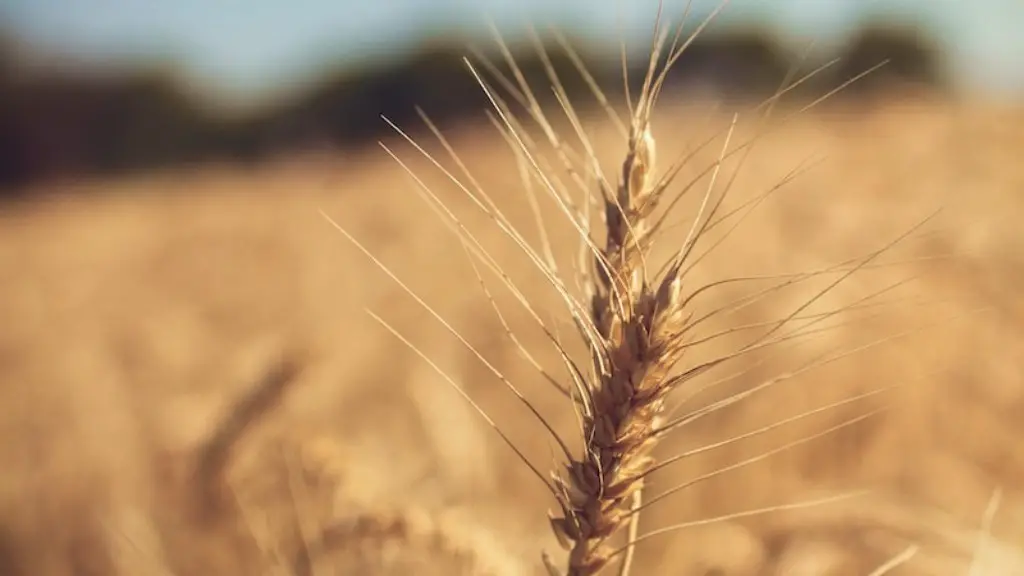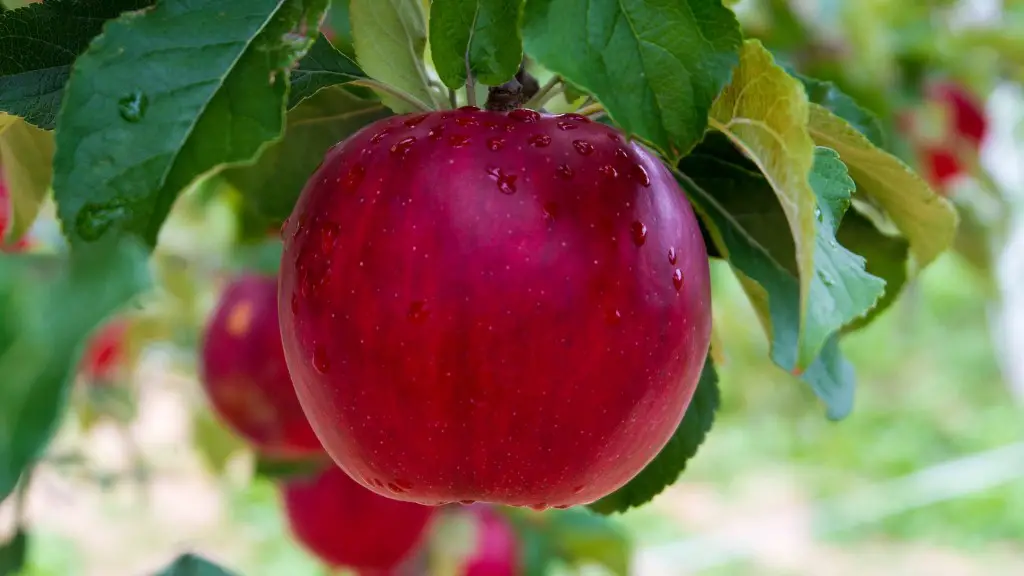Agriculture has brought about monumental changes in the way that society operates. Its effects are far reaching, from influencing global economics to allowing a society’s population to expand at a much faster rate. This article will explore why agriculture was such a pivotal development.
To begin, it is important to look at the immediate effects that the transition from a hunter-gatherer lifestyle to one based around agriculture had on the societies that adopted it. With the advent of agriculture, humans were no longer required to range across the land, investing energy in the pursuit of wild food sources. Instead, they could settle in one place, cultivate the land and produce a predictable, reliable yield.
Technology was integral to the success of agriculture. Tools like scythes and sickles allowed a much greater area of land to be farmed in one season, and wheeled ploughs reduced the amount of effort necessary for the most tedious aspects of farming. Prehistoric farmers could allocate more of their energy to other pursuits too; irrigation systems improved crop yields and allowed for a greater variety of edible plants to be grown.
Agrarian societies could store and preserve surplus crops, providing an insulating effect from periods of famine or other localised disasters. According to the Old Testament, Joseph of Egypt used this approach to stockpile grain and mitigate the effects of protracted periods of drought.
This abundance allowed for a greater division of labour, permitting specialisation and the development of diverse industries. As hunter-gatherers were necessitated to hunt, gather and store food while they were also responsible for all other aspects of sustaining the tribe, there was very little time or energy left to pursue anything else. By contrast, an agrarian society could employ some people in a singular role, such as blacksmithing or carpentry, with results that were more proficient and sophisticated than what was achieved in the past.
The general population was also nourished in ways that would have seemed impressive to hunter-gatherers. Staple crops such as wheat and rice provided the main sources of sustenance, supplemented by additional produce like olives, dates and wild game. Population growth and expansion was possible, with larger populations allowing further improvements to be made to technology, culture and commerce.
The development of agriculture is widely seen as one of the most important advances ever made in human history. This is for good reason; it provided the basis for an ever-widening cascade of inventions and discoveries, each of which could be built upon to improve the way of life of those who embraced it.
Impact on the Environment
Agriculture has acted to drastically alter and shape the landscape. Farming land requires the manipulation of natural resources, from the felling of trees to the clearing of wild areas. As a result, farmers have had to adjust or even modify their environment in order to cultivate their crops. This has led to a transformation of the landscape, from cultivation of open fields, to terracing of hillsides, to the reshaping of entire ecosystems.
The rise of agrarian societies has also seen an increase in the human-induced spread of many species. In some cases, this has been beneficial, such as the introduction of wheat, spinach and other crops, while in other cases it has caused damage to an area’s natural environment. For example, goats and other livestock were introduced in some locations causing rapid changes to the local ecology.
Farming techniques, such as the use of pesticides and fertilisers, initially led to a further deterioration of the environment. Today, however, with the implementation of various farming practices to improve sustainability, and the introduction of greener technologies, there has been a noticeable improvement in the quality of the environment in some areas, although much work is still needed to reduce the impact of human activities.
Agriculture is also responsible for some of the world’s most recognisable landmarks, from terraced rice paddies in Sri Lanka to the intermixture of green and brown fields in the English countryside. Even today, global crop production is something to behold; every year, fields of bright flowers and yellow grain crops can be seen stretching as far as the eye can see.
The benefits of agricultural advances are clear, but they should not overshadow the impact of this practice on the environment. In order to ensure that the gains made by the adoption of agriculture are not outweighed by its side effects, it is imperative that we continue to seek out ways to reduce its environmental footprint.
Economic Revolution
Agriculture has had a major impact on the development of economics. Before agriculture, societies were largely organised in small nomadic groups and as such economic activity was limited. With the advent of agriculture, societies could remain in one area for extended periods of time, allowing for the development of more diverse economic activities.
The production of excess goods provided opportunities for trade. People could use goods that were in surplus to barter with those who lacked them, creating a wide network of seafarers, villagers and merchants. This system of trade not only allowed for a much greater variety of goods to be shared within the population, but it also incentivised curiosity and ingenuity, leading to further advancements in technology, which in turn lead to increased yields and surpluses.
As surpluses increased, so too did the interactions between cities and empires, like the Silk Roads, which connected the Far East with ancient Europe. This trade also created a unit of value, allowing for a much more developed form of economics. Coins became a form of currency and began to be used for large transactions between cities and countries, which led to the growth of the financial systems that we know today.
The transition from hunting and gathering to agriculture also created opportunities for the emergence of the first class structures in society. As land became a more valuable asset, those with access to land had greater control than those without. This led to divisions in society that were more marked than they had been before, and as agricultural surpluses increased, so too did the wealth of those at the top of the classes.
Overall, the development of agriculture not only changed the way humans lived in terms of technology and lifestyle, but also how they interacted with one another. As the sums increased, complex trading methods and systems began to emerge, leading to the types of economy that we see today.
Catalysts for Change
Agriculture has also acted as a catalyst for social change. This can be seen in some of the earliest recorded civilisations, such as the Ancient Egyptians. Before the advent of agriculture, clans and tribes were based around a nomadic lifestyle, whereas the emergence of this practice allowed for a culture to form around the production of crops. This led to a much greater degree of centralised power and leadership, allowing for the establishment of empires.
The domestication of animals also allowed for a bigger variety of food sources and transportation, opening up possibilities to travel farther, move goods faster and pursue different lifestyles. This in turn provided more opportunities, as new ways of living emerged, such as the emergence of cities and the growth of trade. New social roles and job opportunities appeared, creating an even greater diversity of lifestyles within societies.
Agriculture also served as a catalyst for the growth of religions. While hunter-gatherers and nomads were traditionally animists and shamanistic in their beliefs, the rise of agrarian societies and complex trading networks led to the rise of more unified systems of belief. This in turn allowed for the spread of religion, as traders and migratory cultures carried their beliefs with them across the world.
Finally, it can be argued that the development of agriculture has led to the growth of art. Agricultural farming societies have a greater amount of free time than their nomadic counterparts and this enabled them to pursue cultural and artistic activities. The Egyptians, for example, used their free time to create intricate sculptures and monuments, while the Chinese began dancing and playing various instruments for entertainment.
Evolution of Technological Advancement
The development of agriculture led to several shifts in the ways that humans utilised technology. This can be seen in the way humans moved from using stone and bone tools to more robust and precise metallic tools, and of course in the invention of the wheel. As societies became more settled and were able to cultivate a more reliable food source, technology could be developed with more focused intensity.
With the rise of agriculture, humans began to understand how to better manipulate the land in order to extract greater resources. This saw the development of irrigation systems, more advanced farming methods, and the use of animals to help with ploughing and transporting of goods. Technology in this period also allowed for spectacular achievements, such as the creation of roads, bridges and buildings like the Pyramids of Giza.
Furthermore, the development of agriculture has seen the rise of mechanised processes, where machines replace human labour. The mechanisation of farming caused a revolution in the methods used for plantation and harvesting, reducing labour and increasing output. This in turn led to localised industrialisation and far-reaching economic changes which have shaped our world today.
The emergence of agriculture also drove advances in biotechnology, as humans discovered how to modify and improve crops to produce higher yields and more nutrient-rich food. This has been further expanded with modern techniques, such as genetic engineering, helping to ensure a more reliable and efficient global food supply.
Overall, it is clear that agriculture has been essential for the development of our world, from the shape of our landscapes to the way we trade and the technology we use. Its impact has been far-reaching, from social to economic to technological, and this is why it is widely seen as one of the most important developments of humankind.





